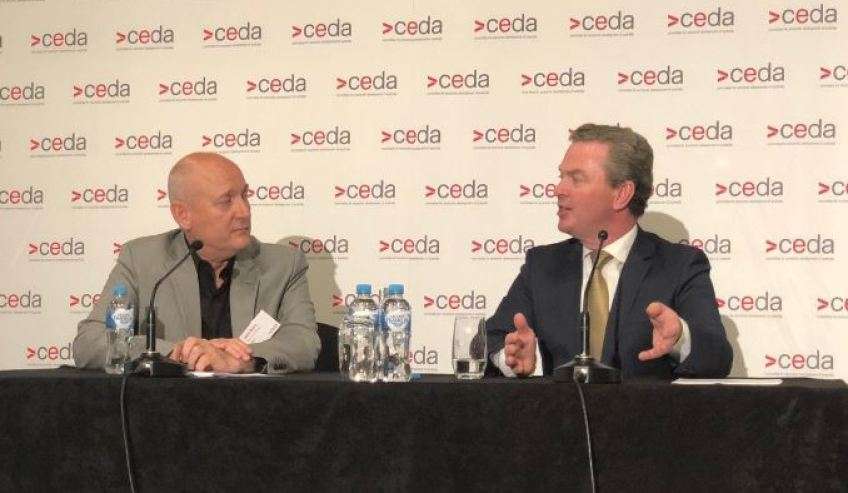The government will outline a 10-year vision for growing defence industry with the imminent release of its new Defence Export Strategy, followed early next year by the Defence Industrial Capability Plan.
To continue reading the rest of this article, please log in.
Create free account to get unlimited news articles and more!
Defence Industry Minister Christopher Pyne said the government was also getting on with boosting national defence capability in other ways, approving 74 capability-related proposals in 2016-17.
It had planned to approve 62. Only a few years ago Defence viewed 46 approvals as a great achievement, he said.
In a speech to the Committee for Economic Development of Australia in Canberra on Monday, Minister Pyne said over the next decade, the government would be investing $200 billion to strengthen defence capabilities and evolve and grow an onshore defence industry that fit our strategic requirements.
Australia needed a potent, capable and adaptable Defence Force and that required a a world-class defence industry with sound, sovereign capability.
This investment signalled the largest renewal of defence capability in our peacetime history, ensuring the Defence Force was equipped to meet an increasing range of commitments and, importantly, was ready for surprises.
“The Turnbull government wants a home-based defence industry that is strong and capable, that learns from the best, employs Australians, and is able to keep up with strategic demands,” Minister Pyne said.
“We want an industry aligned with Australia’s global and regional position, but not just for today, for decades into the future.”
The Naval Shipbuilding Plan commits to a long‑term continuous build program of 12 submarines, nine frigates, 12 offshore patrol vessels and 21 Pacific patrol boats for our neighbours.
“In short, we are on the cusp of a naval shipbuilding boom. By the middle of the 2020s we will need more than 5,000 workers just in Osborne working to build the Future Frigates and the Future Submarines. We will need quadruple that number again across the supply chain,” Minister Pyne said.
He said the government released the Defence White Paper, Defence Industry Policy Statement and Defence Integrated Investment Program in February 2016.
Together these outlined a new approach to defence industry, detailing what the Australian government is seeking to achieve in partnership with industry and what opportunities are on offer.
The minister said the government looked to industry to step up in its capability, productivity and innovation to help deliver this far-sighted continuous shipbuilding program.
“The government will release the Defence Industrial Capability Plan early next year, outlining the government’s 10-year vision for growing defence industry. This is a very exciting step,” he said.
Minister Pyne said the Capability Plan was designed to give industry the tools to help inform its future decisions, outlining our initial sovereign industrial capabilities.
“These are the industrial capabilities so vital to Defence’s operational mission that they must be developed and sustained by Australian industry,” he said.
“They must also be technically and commercially feasible for Australian industry and affordable to pursue.”
Not everything will be identified as a sovereign industrial capability. Australia, indeed no country, can be entirely self-sufficient, and even if it were technically possible, Australia couldn’t afford it, he said.
These sovereign industrial capabilities will be a subset of a defence industry policy that focuses on maximising opportunities for Australian industry to meet all our defence capability needs.
“This plan is another step in the government’s broader defence industry policy. It strives to expand domestic involvement across the acquisition, operation and sustainment of our defence capability,” he said.
Positioning Australia as a high-tech manufacturing nation rested on the nation's ability to develop and export globally innovative products.
“This is why the government will release its Defence Export Strategy by the end of this year. The strategy will provide a comprehensive roadmap for our defence industry to enjoy greater success overseas,” he said.
“This is critical to our objective of building the resilience and sustainability of our defence industry to meet our capability needs, and to securing long-term growth and jobs for Australians.”

 Login
Login







